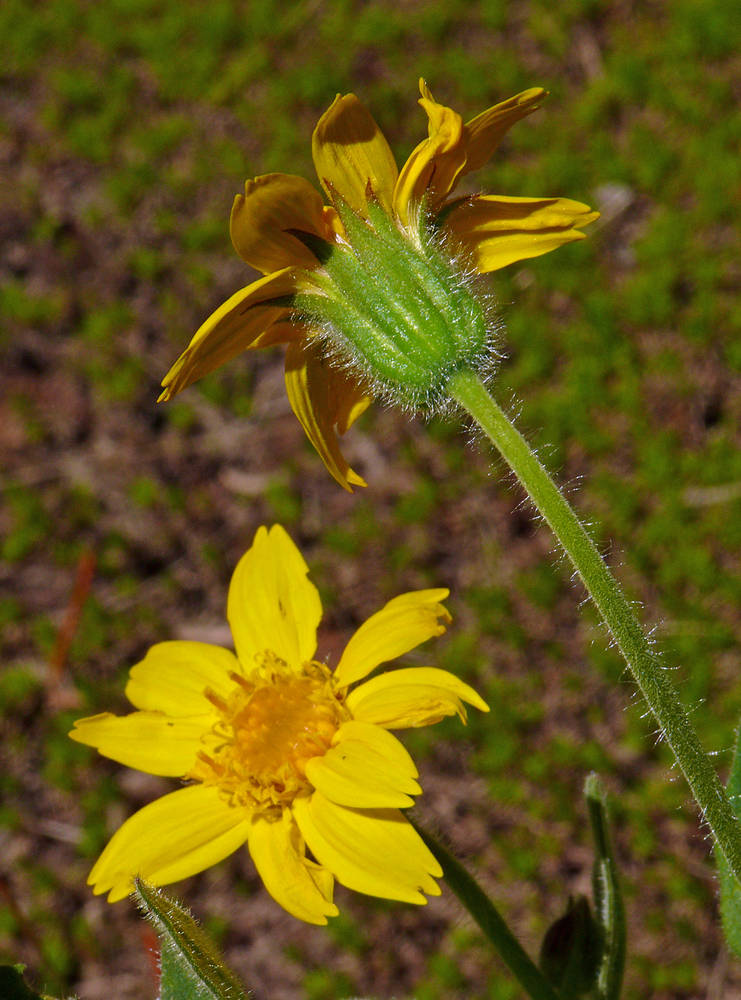
Plants 1–3 dm; rhizomatous.
Stems usually simple, lightly or densely villous, often glandular-puberulent.
Basal leaves usually in separate sterile rosettes; petiolate
. Cauline leaves 1–3 pairs; blades ovate or lanceolate, 2–7 cm, bases truncate or rounded to attenuate, margins denticulate distally, entire proximally, tips acute or rounded, surfaces stipitate-glandular, scabrous to pilose on veins and margins; petiolate, sometimes distal pair sessile.
Heads radiate.
peduncles pilose or villous, glandular-puberulent.
Involucres campanulate to hemispheric, 10–17 mm.
Phyllaries narrowly lanceolate or oblanceolate to linear, tips acute or acuminate, surfaces hispid to pilose or villous, usually glandular-puberulent.
Ray florets 6–14; rays 15–25 mm, yellow.
Disc florets 20–60; corollas 8–10 mm, yellow.
Fruits ± columnar, 6–9 mm, gray or blackish, hirsute or glandular; pappus bristles 8–10 mm, white or straw-colored, barbellate or subplumose.
2n=76.
Open coniferous woods, rocky open slopes and ridges, cliffs. Flowering Jun–Aug. 1400–2500 m. Casc. CA, NV, WA. Native.
as described under Arnica nevadensis
Plants 10-50 cm. Stems simple. Leaves 2-3 pairs, mostly cauline (basal leaves often persistent on sterile rosettes); petiolate (petioles narrowly to broadly winged); blades elliptic to ovate, 3-8 × 2-4 cm, margins entire or denticulate, apices acute to rounded, faces stipitate-glandular. Heads 1(-3). Involucres campanulate-turbinate. Phyllaries 10-16, oblanceolate. Ray florets 6-14; corollas yellow. Disc florets: corollas yellow; anthers yellow. Cypselae dark gray, 6-9 mm, stipitate-glandular; pappi white or tawny, bristles barbellate to subplumose. 2n = 76.Flowering Jul-Aug. Coniferous forests, meadows, rocky slopes; 1500-3000 m; Calif., Nev., Oreg., Wash.